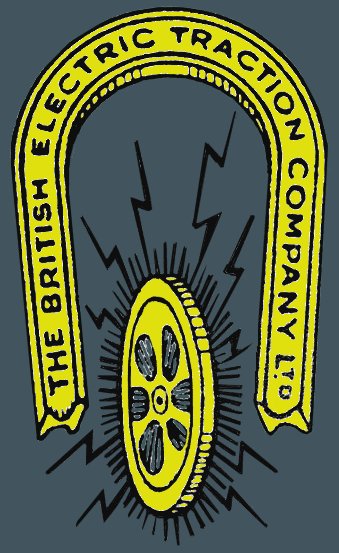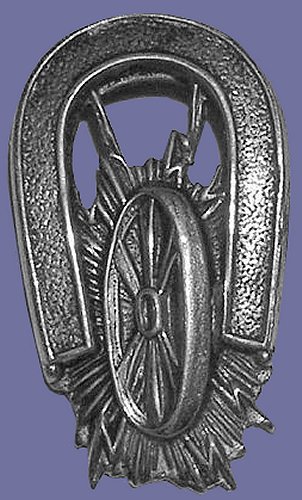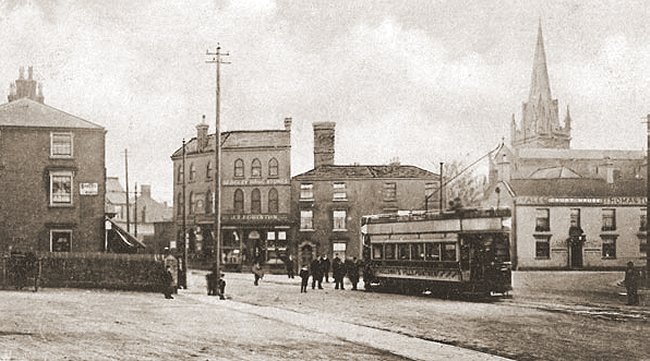|
The British Electric Traction
Company |
| Beginnings The company began in
a small way with the formation of the British Electric
Traction (Pioneer) Company Limited, founded on 7th
November, 1895 to arrange finances for any organisation
wanting to use electrically-powered tramways. The idea for
setting-up such a company came from Mr. Emile Garcke, a
naturalised Englishman who had been born in Germany in 1856.
He became Company Secretary at the
Anglo-American Brush Electric Light Corporation in 1883,
which was based at Lambeth in London. Four years later he
became Manager, then in 1891 became Managing Director of its
successor company, Brush Electrical Engineering Company,
Limited. He also became Managing Director of the newly
formed Electric Construction Company in 1893, a post he held
for three years. During his lifetime he became involved in
at least 80 companies that were associated with electricity
supply or electric traction.
In 1891 he established the Electric and
General Investment Trust for the promotion and financing of
electrical undertakings, and as already mentioned, set up
the British Electric Traction (Pioneer) Company Limited in
1895. He also published many electrical books and pamphlets,
and remained at B.E.T. until 1929, when he retired. He died
in November 1930.
|
 |
Another director of the British
Electric Traction (Pioneer) Company was Mr. John S. Raworth
who worked for Siemens before becoming Superintending
Engineer at the Brush Electrical Company in 1896.
The
Engineer at the BET (Pioneer) Company was Mr. Stephen Sellon
who had previously worked for the Thomson-Houston Company of
America, and had been associated with Mr. Garcke in the
setting-up of the Traction Department at the Electric
Construction Company. He was also a member of the Board of
Trade Committee on Light Railways, and produced a report
that resulted in the Passing of the Light Railways Act of
1896.
On 26th October, 1896 the British
Electric Traction Company was formed to take over the
interests of the B.E.T. (Pioneer) Company, and to
develop electric tramways throughout the country by
promoting and constructing new lines, reconstructing
existing lines, and taking over existing companies.
The company already had proposals for tramways in
Hartlepool, Kidderminster, Oldham, and Stoke-on-Trent.
Mr. Emile Garcke became the new
company’s Managing Director, and the Chairman was Sir
Charles Rivers Wilson.
|
| The company planned to purchase and
operate all of the existing tramways in South
Staffordshire, other than the ones run by Walsall
Council, which had already stated its intention to
purchase and operate its own lines. The track would be
standardised, with a gauge of three feet six inches, and
power would be supplied by an overhead wire. In 1897 the company moved into new
offices at Donington House, Norfolk Street, Strand,
London, and early in the same year proposed a Bill to
incorporate the Birmingham, Wolverhampton & District
Tramways Company, and to acquire part of the South
Staffordshire Company’s system, the whole of the Dudley
& Stourbridge network, the Dudley & Wolverhampton
Company’s network, and Wolverhampton Tramways. Also to
construct several new lines, and seek running powers
over others. The Bill was eventually withdrawn because
an agreement could not be reached with Wolverhampton
Corporation over the cost of the electricity to be
supplied to the company.
Negotiations continued with other
local authorities, and the company soon began to run a
number of tram networks in South Staffordshire, and
went on to become the largest private owner of tramways in the
country, gaining control of many local networks
including South Staffs, Wolverhampton District,
Birmingham and Midland, Dudley and Stourbridge,
Kidderminster and Stourport.
The company’s other networks
included Airdrie and Coatbridge Tramways Barnsley,
Barrow-in-Furness, Brighton and Shoreham, Cambridge,
Cavehill and Whitewell Tramway, Devonport and District,
Dewsbury Ossett and Soothill Nether, Gateshead,
Gravesend, Great Yarmouth, Greenock and Port Glasgow,
Hartlepool, Jarrow, Leamington and Warwick, London
(Metropolitan Electric and South Metropolitan systems),
Merthyr Tydfil Electric Tramways, Mexborough and Swinton,
Middleton, Oldham Ashton and Hyde, Peterborough, Poole,
the Potteries, Rossendale Valley, Rothesay and Ettrick
Bay Light Railway, Sheerness, Southport, South Shields,
Swansea, Swansea and Mumbles Railway, Taunton,
Tynemouth, Weston-Super-Mare, Worcester, Yorkshire
(Woollen District), and Wrexham and District Electric
Tramways. B.E.T. also operated trams in Australia and
New Zealand.
|
|
In 1898 B.E.T. and the Brush
Electrical Engineering Company established the
Electrical Power Distribution Company to provide
electricity to municipal areas, and in 1903 B.E.T.
became a tram manufacturer when it acquired a
controlling interest in the Brush Electrical Engineering
Company.
By 1904 B.E.T. controlled 66 companies, mostly
involved with tramways or electricity supply, and in
1905 a subsidiary, the British Automobile Traction
Company was formed to run motor buses. By 1906 the
company operated fifteen percent of all British
tramways.
Unfortunately B.E.T. began to
struggle financially because of poor returns from its
tramways due to falling fares. Some tramways had to be
subsidised by local authorities in order to survive, and
others were being compulsorily purchased by local
authorities, so the motor buses run by the British
Automobile Traction Company became more important.
In 1912, one of the tramways that
was under B.E.T. control, the City of Birmingham
Tramways Company Limited, was put into voluntary
liquidation after Birmingham Corporation took over the
company’s lines on 1st of January of that year. Four
years later B.E.T. had a reduction in share capital
because of its falling assets.
|

The B.E.T. logo. |
|
By 1920 the company started to
diversify, and began to acquire other businesses of a
totally different nature. One of the first was Stoll
Picture Productions Limited, a film production company.
Another was Advance Laundries Limited, and Laundry
Services Limited, which became a public company in 1936.
B.E.T. sold its shareholdings in a number of companies
including the British Automobile Traction Company, the
London and Suburban Traction Company, and the
Shropshire, Worcestershire and Staffordshire Power
Company, and in 1930 purchased shares in several gas
companies, and acquired the National Electric
Construction Company.
B.E.T’s bus fleet rapidly grew. By
1944 the company owned 8,500 buses which operated
throughout the country. In 1947 the country’s power
station and electricity distribution network was
nationalised, and so B.E.T. lost the once important
electricity generation and distribution part of the
business. The company continued to diversify, and
acquired a large number of businesses involved in a wide
range of activities from construction and plant hire,
leisure and entertainment, printing and publishing,
textile maintenance and waste management, to a trust
company in South Africa. One of its acquisitions was a
significant portion of Broadcast Relay Service Limited,
otherwise known as Rediffusion. In 1967 B.E.T. acquired
a controlling interest in the company, and in 1983
acquired the remaining equity.
The company’s last tram, which ran
on the Gateshead and District Tramways Company, made its
last journey on 4th August, 1951, and in 1954 B.E.T.
acquired 22 percent of the shares in Initial Services
Limited, the hygiene and towel company. When commercial
television started in the UK in 1955, B.E.T. and
Associated Newspapers funded the formation of
Associated-Rediffusion which began broadcasting in
London.
In 1967 B.E.T. sold its bus
business to the Transport Holding Company, and continued
with its acquisitions. In 1968 B.E.T. acquired Boulton
and Paul Limited, Grayston Limited, J. D. White Limited,
Biffa Limited, Re-Chem International Limited, and became
involved in the search for oil in the North Sea.
In 1985 B.E.T. completely took over
Initial Services Limited, and in 1996 was itself
taken over by Rentokil, which then became Rentokil
Initial.
In just over one hundred years
B.E.T. had risen from small beginnings to become a vast
industrial organisation, controlling many businesses, in
many different fields. The company changed beyond
recognition from its early days when it operated trams, to
diverse activities including leisure industries, film
and TV, waste management, and oil exploration. It was
one of the country’s great business success stories.
|
|

A tram in Sedgley Bull Ring, on
its way to Dudley. From an old postcard. |
 |
Return to
Electric Tramcars |
|